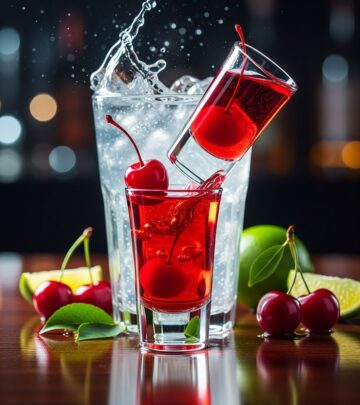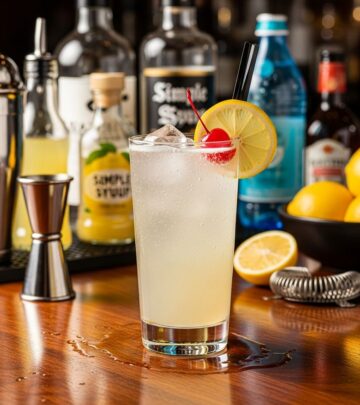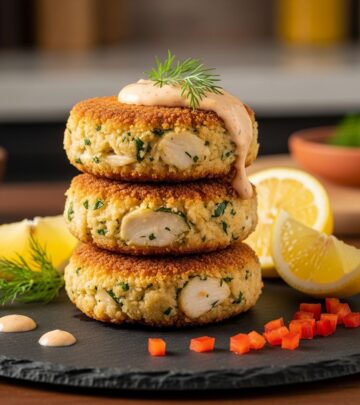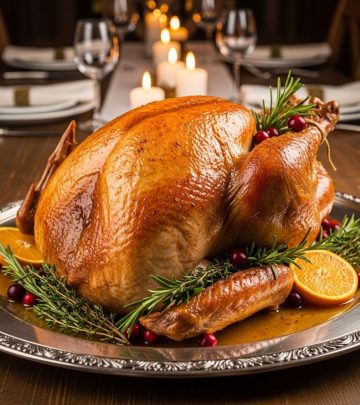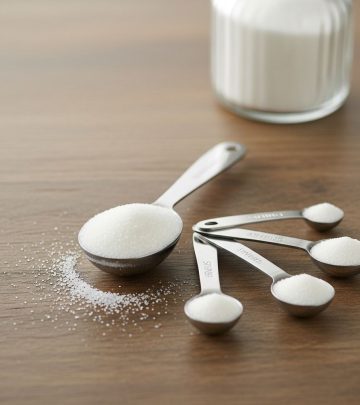Mastering the Classic Mai Tai Cocktail: Tips, History, Variations & Recipes
Discover the art and allure of the classic Mai Tai cocktail—a perfect blend of rum, fresh citrus, and exotic flavors for any home bar.
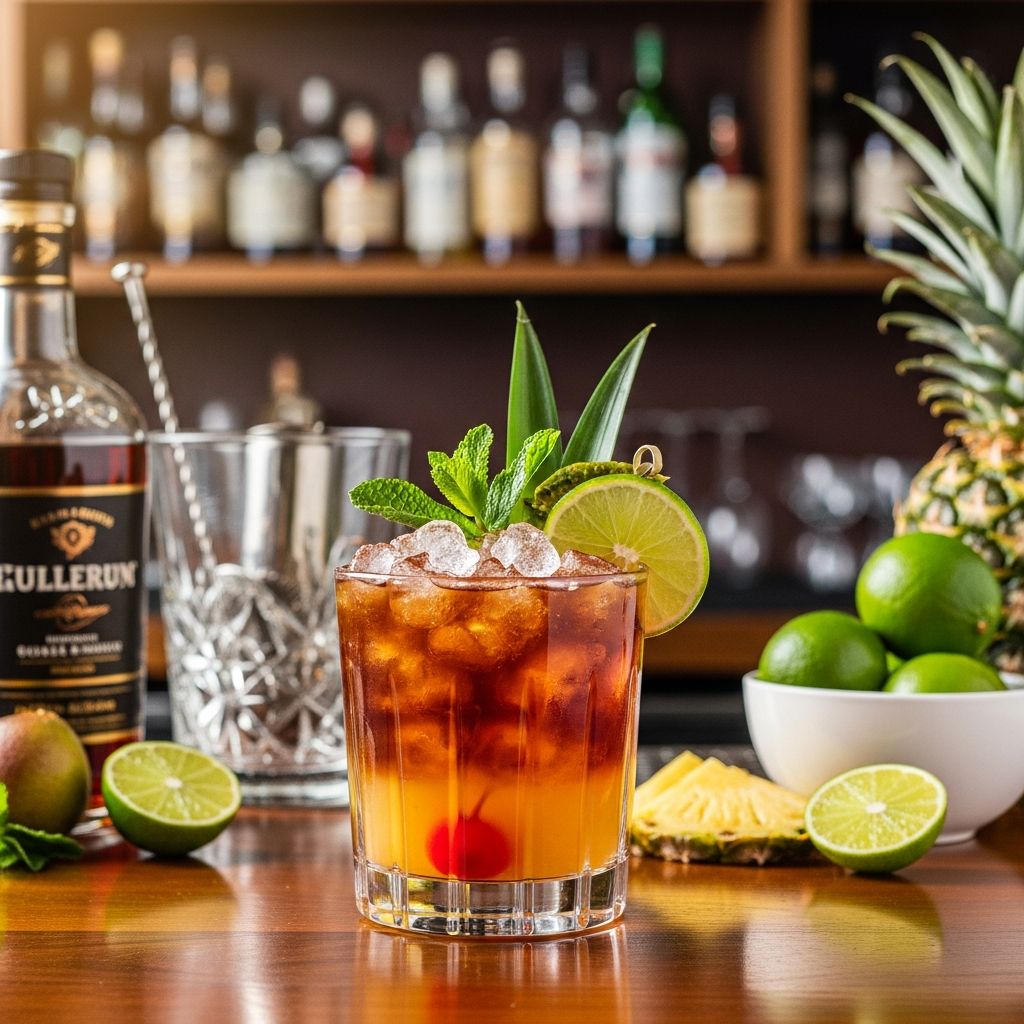
Classic Mai Tai: The Legend Behind the Tiki Icon
The Mai Tai is among the most revered tiki cocktails in the world, representing an era of tropically inspired concoctions bursting with flavor and flair. Rooted in the vibrant cocktail culture of the mid-20th century, this celebrated drink blends rums, exotic liqueurs, and fresh citrus, producing a harmony that has captivated drinkers for generations. Whether you’re a new enthusiast or a seasoned home bartender, mastering the Mai Tai is a delightful and rewarding pursuit.
What Makes a Mai Tai?
The classic Mai Tai is all about balance—fresh, tart lime, the richness of rum, the aromatic essence of orange liqueur, and the delicate sweetness of almond-infused orgeat. Authenticity matters: seasonal citrus, quality spirits, and thoughtfully chosen garnishes elevate this drink from ordinary to extraordinary. Here’s what you’ll need for a true-to-spirit Mai Tai:
- White Rum – Lighter and crisper, providing the drink’s base.
- Dark Rum – Used as the float for aroma and a rich finish.
- Orange Liqueur – Such as Orange Curaçao, Grand Marnier, or Cointreau; delivers zesty sweetness.
- Fresh Lime Juice – For tartness and brightness.
- Orgeat Syrup – A classic almond syrup, bringing a nutty, floral dimension.
- Garnishes – Mint sprig, maraschino cherry, lime wedge, and (optionally) pineapple.
Equipment Needed
- Cocktail shaker
- Strainer
- Rocks glass or double old fashioned glass
- Gold cocktail picks (for garnish)
The Classic Mai Tai Recipe: Step-by-Step
Ready to craft the ultimate Mai Tai? Follow this straightforward recipe for a taste of timeless tiki magic:
- 1½ ounces white rum
- ¾ ounce orange liqueur
- ¾ ounce fresh lime juice
- ½ ounce orgeat syrup
- ½ ounce dark rum (for floating)
- Fill a cocktail shaker with ice.
- Add white rum, orange liqueur, lime juice, and orgeat syrup.
- Shake vigorously for 10–15 seconds.
- Strain into a rocks glass filled with fresh ice (crushed ice is preferable for authentic presentation).
- Slowly float the dark rum on top by pouring it gently over the back of a spoon.
- Garnish with a sprig of mint, maraschino cherry, and a slice of lime. For extra flair, use a pineapple wedge or a cocktail umbrella.
Behind the Drink: History & Origins
The Mai Tai boasts one of the most intriguing origin stories in cocktail lore. Contrary to the tropical appearance, its origins are more Californian than Polynesian. The drink as we know it today was reportedly invented in the 1940s at Trader Vic’s in California by Victor J. Bergeron. When first served to guests from Tahiti, they exclaimed, “Mai Tai!”—meaning “the best—out of this world” in Tahitian, thus giving the cocktail its name.
Yet, as with all great legends, there’s contention. Don the Beachcomber, another pioneer of the tiki movement, also laid claim to its creation, sparking debates and even legal proceedings over the true inventor. Despite these disputes, Trader Vic’s version is widely accepted as the archetype, and it is that recipe which most modern interpretations follow.
Tips for Making a Perfect Mai Tai
- Use Fresh Ingredients: Freshly squeezed lime juice and quality orgeat make a dramatic difference in flavor.
- Balanced Rum Blend: Combining white and dark rums adds complexity—the light for crispness, the dark for depth.
- Layer the Dark Rum: Pouring the dark rum float slowly over the back of a spoon achieves that signature layered effect.
- Customize Garnishes: A mint sprig brings aroma, while a cherry or pineapple provides visual appeal.
- Don’t Oversweeten: The Mai Tai is not meant to be syrupy; avoid using pineapple juice or grenadine in the classic recipe.
Frequently Asked Questions (FAQ)
What is a Mai Tai cocktail made of?
A Mai Tai is traditionally mixed with rum (white and dark), orange liqueur, fresh lime juice, and orgeat syrup.
Where did the Mai Tai originate from?
This iconic cocktail originated in California, gaining its reputation at Trader Vic’s bar in the 1940s.
How do you pronounce Orgeat?
It’s pronounced Or-ZHAAT.
What is the best glassware for serving a Mai Tai?
The best vessel is a double old fashioned or rocks glass, which allows space for ice and garnishes.
What’s the best type of ice for a Mai Tai?
Crushed ice creates a frosty, refreshing experience and chills the drink quickly.
Is pineapple juice a traditional Mai Tai ingredient?
No—while some “tiki bar” versions add pineapple or grenadine, a true Mai Tai recipe does not include these.
Popular Mai Tai Variations
The Mai Tai’s simple yet versatile framework makes it ripe for interpretation and experimentation. Here are some delicious twists on the classic:
| Variation | Main Differences | Flavor Profile |
|---|---|---|
| Mango Mai Tai | Fresh mango is muddled and shaken with the classic ingredients. | Sweet, tropical, with smooth mango undertones. |
| Cinnamon Mai Tai | Infused with cinnamon and sometimes a splash of half-and-half for creaminess. | Spiced warmth, balanced by traditional tartness. |
| Holiday Vibes Mai Tai | Adds cranberry and pineapple juices, clementine juice, and grenadine with dark rum. | Fruity, tangy, and festive—ideal for holiday parties. |
| Pineapple Mai Tai | Features pineapple juice or puree along with the classic ingredients. | Sweeter, with an overt tropical pineapple presence. |
Orgeat Syrup: The Almond Secret
Orgeat syrup is an almond-based sweetener that lends the Mai Tai its signature nutty, aromatic note. Store-bought varieties are widely available, but homemade orgeat offers a fresher, more complex flavor. To make your own:
- Soak raw almonds in water overnight.
- Blend until fine, then strain liquid through cheesecloth.
- Add sugar (preferably demerara), stir to dissolve, and finish with a small amount of orange flower water.
The result is a smooth, milky syrup that not only enriches Mai Tais but can also be added to coffee or other cocktails.
Serving & Presentation Tips
- Glassware: Double old fashioned or rocks glass for authenticity and volume.
- Ice: Always use fresh, crushed ice for that frosted island look.
- Garnish: Use fresh mint, a zingy lime wedge, a cherry, and—if desired—a decorative cocktail umbrella.
- Presentation: Layering the dark rum float on top offers visual impact and a gradual change in flavor as you sip.
Common Misconceptions & Mistakes
- Many assume all tiki drinks are cloyingly sweet, but the authentic Mai Tai is balanced and never overly sugary.
- Some recipes call for adding pineapple or grenadine, but these were later adaptations and not part of the original recipe.
- Using only one type of rum diminishes the depth—a blend of white and dark is recommended.
- Store-bought orgeat is convenient but can lack the fragrance and subtlety of homemade versions.
More FAQs
Q: Can I use only one kind of rum?
A: While some home bartenders opt for a single rum, the combination of white and dark adds essential complexity and authenticity.
Q: Can I make a non-alcoholic Mai Tai?
A: Absolutely! Substitute the spirits with a mix of fresh lime, orange juice, almond syrup, and sparkling water for a tropical mocktail.
Q: What’s the best way to sweeten a Mai Tai?
A: Stick to orgeat. Avoid extra sugar as the drink should be tart and nutty, not sugary.
Q: Is it OK to use bottled lime juice?
A: Freshly squeezed lime juice is strongly preferred for the best taste and freshness.
Q: Which orange liqueur is best?
A: Orange Curaçao is traditional, but Cointreau or Grand Marnier are also excellent choices—just avoid blue curaçao for the classic version.
Mai Tai Around the World
The Mai Tai’s legacy extends far beyond its Californian birthplace. Today, it stars on tiki menus worldwide and even claims the status of “official cocktail” at major events and resorts. Versions abound: from resort bars adding tropical juices to high-end lounges reviving the drink’s pre-sweetened dry, complex roots. Despite its many incarnations, the unifying factor remains the same—a thirst for adventure and the escapism of island living, one glass at a time.
Related Cocktails to Try
- Rum Runner: A rum-based fruit extravaganza with banana liqueur and blackberry.
- Strawberry Daiquiri: Blended with fresh strawberries and lime.
- Blue Hawaiian: With blue curaçao, coconut, pineapple, and rum.
- Painkiller: Rum, pineapple, coconut, orange, and nutmeg.
- Classic Gimlet: Gin or vodka with sweetened lime.
Final Thoughts: Making It Your Own
The beauty of the Mai Tai lies in its adaptability and the sense of fun it brings to any gathering. Whether you stick with the much-lauded original or take the scenic route via seasonal twists, this drink encourages exploration. Start with a balanced base, invest in quality ingredients, and don’t be afraid to experiment with subtle additions like fresh herbs, seasonal fruits, or even spiced syrups. Whatever your approach, raise your glass to a true classic—tropically inspired, endlessly refreshing, and always, out of this world.

